House Appropriators Give SecDef Blank Check For $28.6B
Posted on

President Trump and Defense Secretary Jim Mattis
WASHINGTON: In a sign of how strange the budget process has become, the House Appropriations Committee has approved a defense spending bill that basically gives Secretary Jim Mattis a $28.6 billion blank check. Scattered across seven different accounts in the base and Overseas Contingency Operations budgets, it’s called the National Defense Restoration Fund, and it makes up 4.3 percent of the bill’s $658.1 billion Pentagon budget.
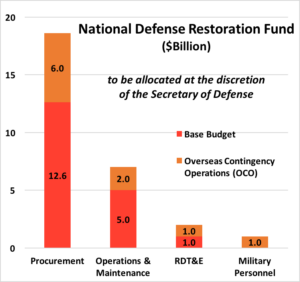 That percentage may seem small, but it’s more than any previous SecDef has had at his discretion. The only requirement? To “notify” Congress 15 days before dedicating the funds to a specific purpose. In theory, that gives legislators time to stop a transfer they dislike, but it would require new legislation, and the Hill just isn’t set up to pass bills on a two-week turnaround. That is, of course, why, historically, almost everything has to go through the annual budget process.
That percentage may seem small, but it’s more than any previous SecDef has had at his discretion. The only requirement? To “notify” Congress 15 days before dedicating the funds to a specific purpose. In theory, that gives legislators time to stop a transfer they dislike, but it would require new legislation, and the Hill just isn’t set up to pass bills on a two-week turnaround. That is, of course, why, historically, almost everything has to go through the annual budget process.
Normally, when a congressional committee adds to the Pentagon’s budget request, it allocates those increases to specific projects and programs — often ones in powerful legislators’ home states. This year, while HAC certainly tweaked funding levels for a host of programs, it did so much less generously than the House and Senate Armed Services Committees (see the graphics comparing ships and planes added). Instead, HAC essentially added $28.6 billion to President Trump’s request and put all that money into the National Defense Restoration Fund:
-
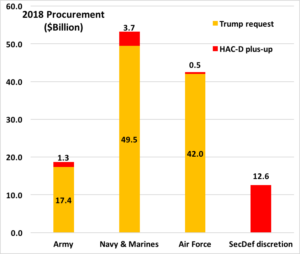 $18.6 billion is for procurement of new equipment: “vehicles, ships, aircraft, munitions, space systems, missile defense systems, modifications to weapon systems and equipment, other procurement requirements, and emerging requirements deemed by the Secretary of Defense to be in the national security interest of the United States”;
$18.6 billion is for procurement of new equipment: “vehicles, ships, aircraft, munitions, space systems, missile defense systems, modifications to weapon systems and equipment, other procurement requirements, and emerging requirements deemed by the Secretary of Defense to be in the national security interest of the United States”; - $7 billion for operations and maintenance (aka readiness), with a similarly broad definition;
- $2 billion is for Research, Development, Testing, & Engineering (RDT&E), and
- $1 billion is for military personnel. What’s more, the bill adds 17,000 personnel to the armed forces — and it’s up to the Secretary which service they should go to, at what ranks, in what specialties, and as active-duty regulars, National Guard, or reservists.
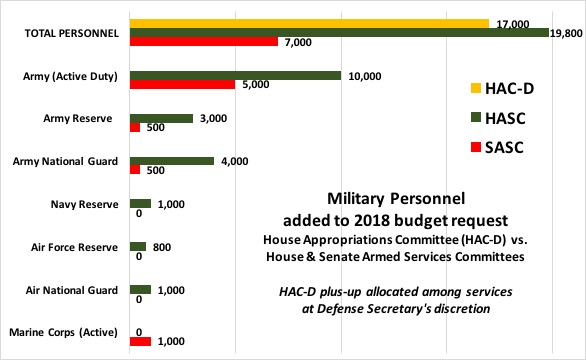
HAC defense subcommittee chair Kay Granger specifically tied this extraordinary fund to extraordinary circumstances, The new administration, she says, is conducting a series of in-depth strategic reviews and needs funding to implement its desired changes swiftly.
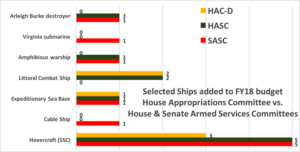 “The secretary and the Joint Staff are expected to deliver a new defense strategy in September, a much-needed update to the last review conducted in 2014,” Granger said. “The Defense Restoration Fund will enable the Secretary to make necessary investments resulting from that review now, instead of having to wait until 2019.”
“The secretary and the Joint Staff are expected to deliver a new defense strategy in September, a much-needed update to the last review conducted in 2014,” Granger said. “The Defense Restoration Fund will enable the Secretary to make necessary investments resulting from that review now, instead of having to wait until 2019.”
Equally real, if unspoken, is the extreme uncertainty about how big the defense budget will actually be. The Budget Control Act spending cap remains in force, with neither a short-term fix nor a permanent repeal in sight, yet President Trump has requested a much higher level of funding, and all three congressional committees to vote so far have asked for even more. Not allocating HAC-D’s increase yet will make the inevitable adjustments much easier when the final compromise comes out to a lower (or higher) number: Instead of taking back increases to scores of specific accounts, HAC can just adjust the total it’s giving Mattis to play with.
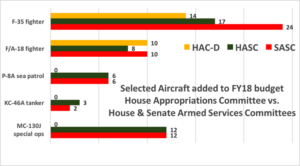 So is the National Defense Restoration Fund a unique expedient for a unique time? Staunch advocates of congressional oversight would certainly hope so. But for those who want government to run more like a business, the idea may have appeal. Corporate boards don’t give their CEOs a fixed budget for the year, precisely allocated by project, and insist on approving any change — and that’s when the only things at stake are profits and market share, not life and death. Setting funds aside, unallocated, to cope with unforeseen contingencies is actually common advice for small business and even individuals. Maybe giving the Defense Secretary discretion to spend four percent of the defense budget is actually a good idea.
So is the National Defense Restoration Fund a unique expedient for a unique time? Staunch advocates of congressional oversight would certainly hope so. But for those who want government to run more like a business, the idea may have appeal. Corporate boards don’t give their CEOs a fixed budget for the year, precisely allocated by project, and insist on approving any change — and that’s when the only things at stake are profits and market share, not life and death. Setting funds aside, unallocated, to cope with unforeseen contingencies is actually common advice for small business and even individuals. Maybe giving the Defense Secretary discretion to spend four percent of the defense budget is actually a good idea.
Subscribe to our newsletter
Promotions, new products and sales. Directly to your inbox.
